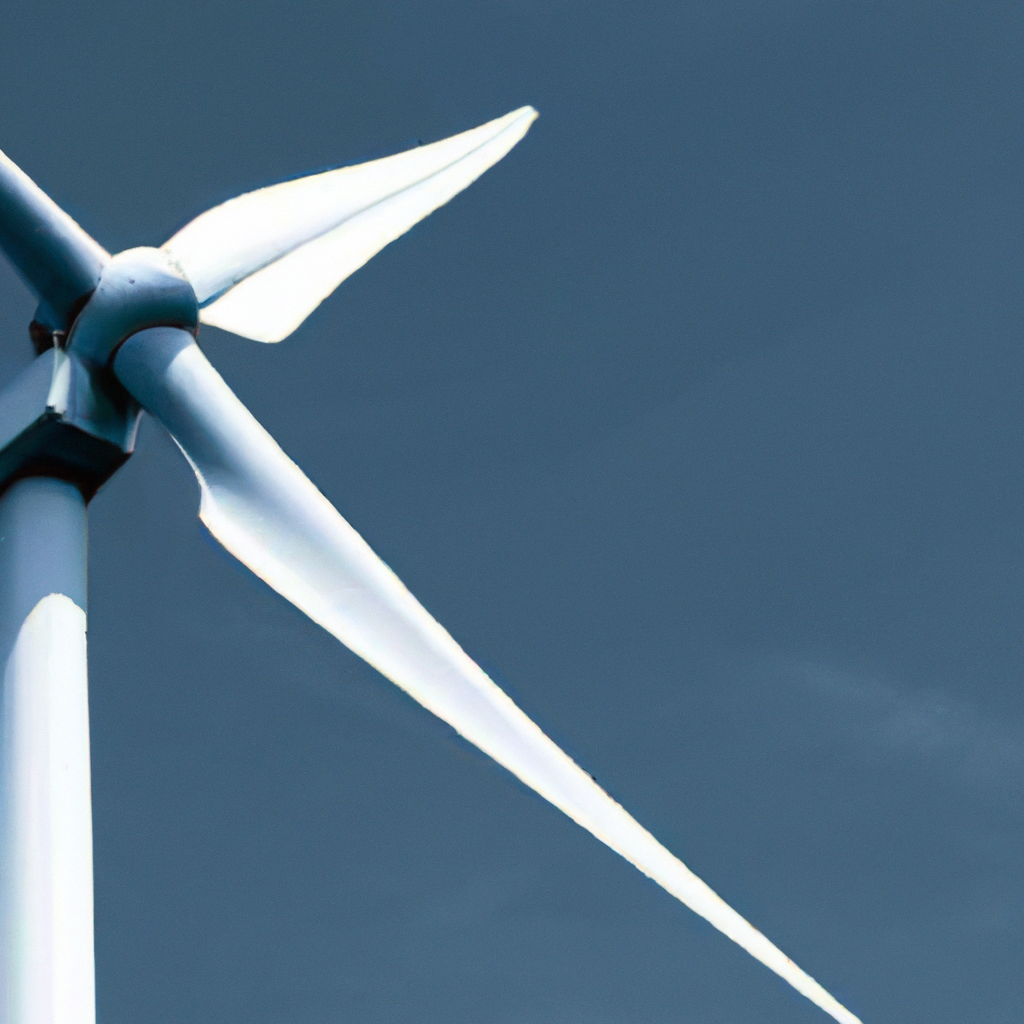In today’s world, the pressing issue of climate change has never been more prominent, and finding solutions to reduce greenhouse gas emissions is at the forefront of our minds. One of the most effective ways to address this concern is through the implementation of renewable energy sources. By harnessing the power of wind, solar, hydro, and geothermal energy, we can significantly decrease our reliance on fossil fuels and consequently decrease the amount of greenhouse gases released into the atmosphere. In this article, we will explore the question, “How does renewable energy contribute to reducing greenhouse gas emissions?” and how this vital shift towards cleaner energy sources is shaping a sustainable future for our planet.

Check Out Our Top Eco Friendly Product Picks On Amazon Here
Advantages of Renewable Energy
The transition to renewable energy is vital for our planet’s sustainability. As more countries and industries recognize the benefits of clean energy, the shift away from traditional fossil fuels is gaining momentum. Let’s delve deeper into the myriad advantages that renewable energy sources bring to the table.
Reduces Dependence on Fossil Fuels
The current global energy landscape has been dominated by fossil fuels for over a century. These traditional energy sources, such as coal, oil, and natural gas, are not only finite but are also responsible for the majority of carbon emissions that contribute to climate change.
Economic Implications
When we depend heavily on imported fossil fuels, it can make a country vulnerable to price fluctuations in the global market. Investing in local renewable energy resources can help stabilize energy costs, reduce import expenses, and stimulate domestic industries. Solar panel manufacturing, wind turbine installations, and biofuel production can also create local jobs, boosting the economy.
Geopolitical Stability
Over-reliance on fossil fuels has often led to geopolitical tensions, as nations vie for control over oil-rich regions. By adopting renewable energy, countries can reduce their dependence on external energy sources, promoting peace and regional stability.
Does Not Emit Greenhouse Gases During Operation
Fossil fuel-based power plants are significant contributors to global greenhouse gas emissions. In contrast, renewable energy systems present a cleaner alternative that helps mitigate environmental degradation.
Health Benefits
Air pollution caused by burning fossil fuels can lead to a multitude of health problems, including respiratory diseases and cardiovascular issues. By reducing the number of pollutants released into the air, renewable energy sources contribute to healthier populations and potentially lower healthcare costs.
Biodiversity Preservation
Greenhouse gas emissions and climate change have detrimental effects on diverse ecosystems around the world, from coral reefs to rainforests. As renewable energy sources reduce these emissions, they play a role in preserving the world’s biodiversity.
Sustainable and Abundant Energy Source
At the heart of the renewable energy revolution is the promise of sustainability — the idea that our energy needs can be met without compromising the well-being of future generations.
Technological Advancements
As more investment flows into the renewable energy sector, technologies have evolved rapidly. The efficiency of solar panels has increased, wind turbines have become more cost-effective, and energy storage solutions are progressing at an unprecedented rate. These advancements mean that renewable energy is not only sustainable but also increasingly competitive with fossil fuel sources.
Economic Resilience
In the long run, as fossil fuel reserves dwindle and become more expensive to extract, economies rooted in renewable energy will likely prove more resilient. They will be better shielded from the price volatility associated with non-renewable resources.
Job Creation
The renewable energy sector has the potential to be a significant source of employment. From research and development to manufacturing, installation, and maintenance, a shift towards renewables can create millions of jobs worldwide.
In summary, the transition to renewable energy is not just an environmental imperative but also an economic and social opportunity. As the world continues to confront the challenges posed by climate change and resource depletion, renewable energy stands out as a beacon of hope, promising a cleaner, more prosperous, and sustainable future.
Disadvantages of Renewable Energy
Despite the considerable advantages of renewable energy, it’s essential to address the challenges and disadvantages it presents. By understanding these limitations, we can work towards innovative solutions and make renewables more viable and universally accessible.
Intermittency and Reliability
One of the most frequently cited disadvantages of renewable energy sources like wind and solar is their intermittency.
Unpredictable Production
Solar panels only produce electricity when the sun shines, and wind turbines only when the wind blows. These fluctuations can be unpredictable, making it challenging to ensure a constant energy supply, especially during peak demand.
Storage Challenges
To combat the issue of intermittency, energy storage solutions, like batteries, are required. However, current battery technology can be expensive and may not always provide sufficient storage for prolonged periods of low renewable output.
Land and Environmental Impact
While renewables are environmentally friendly in terms of emissions, they do have other environmental concerns.
Land Use
Solar farms and wind parks require large expanses of land, which might interfere with natural habitats or agricultural activities. Hydroelectric dams, while powerful energy producers, can significantly alter river ecosystems and displace local communities.
Resource Extraction
The production of renewable energy infrastructure, like solar panels and wind turbines, requires the extraction of minerals and materials. Mining these resources can be environmentally detrimental and presents ethical concerns in areas where mining regulations are lax or non-existent.
Economic Concerns
Transitioning to renewable energy can also pose economic challenges.
Initial Costs
The upfront costs for renewable energy technologies can be high, deterring individuals and small businesses from adopting them, even if they offer savings in the long run.
Job Displacement
While the renewable sector can create jobs, there’s also potential job loss in traditional energy sectors like coal mining. Transition plans are crucial to ensure workers in declining industries receive adequate training and support to move into new roles.
Technological Maturity
Certain renewable technologies are still in their infancy, making them less efficient or more expensive than established methods.
Research and Development
Continuous research is required to improve the efficiency and feasibility of emerging technologies, and this demands significant investment and time.
Maintenance and Lifespan
Some renewable energy systems, especially early versions, have faced issues with durability and longevity, leading to concerns about long-term reliability and the frequency of maintenance or replacement.
In conclusion, while renewable energy holds immense promise for a sustainable future, it’s imperative to address its challenges head-on. By acknowledging these disadvantages, stakeholders can drive innovation, refine technologies, and develop strategies that ensure the global energy transition is not only sustainable but also holistic and inclusive.
Types of Renewable Energy
The world is witnessing a seismic shift towards renewable energy sources, given the urgent need to combat climate change and reduce our dependence on fossil fuels. Let’s explore in greater depth some of the most commonly used types of renewable energy and their respective nuances.
Solar Power
Harnessing the sun’s energy has been a concept of interest for centuries, but it’s only in recent decades that technological advancements have made solar power a viable and efficient energy source.
Photovoltaic Cells and Solar Panels
The heart of solar energy lies in photovoltaic cells, typically made from silicon. When sunlight hits these cells, it knocks electrons loose, generating an electric current. These cells are grouped together to form solar panels, which can be installed on rooftops, vast solar farms, or even on smaller devices like calculators.
Concentrated Solar Power (CSP)
Another solar technology, CSP, focuses sunlight using mirrors or lenses to create intense heat, which then produces steam to drive a turbine and generate electricity.
Real-world Application: The Solar City
In places like Dubai, the Mohammed bin Rashid Al Maktoum Solar Park aims to be the largest concentrated solar power project globally, emphasizing the potential of solar energy in reshaping urban power structures.
Wind Power
The age-old practice of using windmills to grind grain has evolved into using wind turbines to generate electricity, offering a sustainable power solution.
Onshore vs. Offshore Wind Farms
While onshore wind farms are more common and easier to establish, offshore wind farms, built in large bodies of water, can capture stronger and more consistent winds, producing more electricity.
Example: Denmark’s Wind Power Leadership
Denmark, a pioneer in wind energy, often generates over 40% of its electricity from wind, showcasing how nations can integrate wind power into their energy matrix seamlessly.
Hydroelectric Power
Leveraging the kinetic energy of water has been a staple in power generation, from traditional water wheels in ancient civilizations to massive dams today.
Types of Hydro Plants
While the traditional dams with storage reservoirs are common, there are also run-of-the-river systems that divert a river’s flow through a channel and pumped storage where water is cycled between two reservoirs at different elevations.
Notable Example: The Hoover Dam
The Hoover Dam in the US stands as a testament to hydroelectric power’s capacity, supplying power to millions in the southwestern states.
Biomass Energy
Biomass, an organic material used as an energy source, presents both challenges and opportunities.
Direct Combustion and Gasification
While burning biomass directly is the most straightforward method, newer technologies like gasification convert biomass into a gas, which can then be burned more cleanly.
Biofuels: Ethanol and Biodiesel
Corn, sugar cane, and other crops can be converted into ethanol, an additive in gasoline. Similarly, vegetable oils and animal fats give rise to biodiesel, which can replace or blend with conventional diesel.
Sustainability Challenges
While biomass can reduce waste and offers a renewable energy source, over-reliance, especially on food crops for biofuels, can pose environmental and food security challenges. An illustrative example is the debate over corn-based ethanol in the US, which has implications for land use and food prices.
Renewable energy, in its various forms, presents multifaceted solutions to our pressing energy and environmental challenges. As technology progresses and as societies prioritize sustainability, these energy sources will undoubtedly play an even more pivotal role in shaping our global energy landscape.

Renewable Energy in Transportation
The transportation sector has historically been one of the major contributors to greenhouse gas emissions, primarily due to its heavy reliance on fossil fuels. As the urgency to combat climate change becomes more apparent, integrating renewable energy into transportation is becoming imperative. Let’s delve deeper into the promising avenues of renewable energy within this sector.
Electric Vehicles (EVs)
The Rise of EVs: With advancements in battery technology, EVs have seen exponential growth over the past decade. Global giants like Tesla, Nissan, and Chevrolet have introduced models that challenge the range and performance of traditional gasoline-powered vehicles.
Environmental Impact: The environmental benefits of EVs are profound. Unlike traditional vehicles, EVs have zero tailpipe emissions, meaning they don’t emit harmful pollutants that contribute to smog and respiratory illnesses. Furthermore, when charged from a grid powered by renewables, their carbon footprint is minimal.
Infrastructure and the Future: Charging infrastructure is expanding rapidly, with public and private sectors investing heavily. Supercharger networks and urban charging points are becoming commonplace in many cities. With trends like these, it’s projected that EVs will dominate the automotive market within a few decades.
Biofuels
From Food to Fuel: Biofuels, mainly ethanol and biodiesel, are produced from biomass like corn, sugarcane, and soybeans. They can be blended with gasoline and diesel or used in their pure form in compatible vehicles.
Environmental and Economic Benefits: Not only do biofuels help in reducing greenhouse gas emissions, but they also offer opportunities for agricultural sectors, especially in developing countries, to diversify their economies and improve energy security.
Second-generation Biofuels: While first-generation biofuels rely on food crops, second-generation biofuels are derived from non-food sources like agricultural waste, forest residues, and non-food plants like switchgrass. These sources offer more significant potential for sustainability and reduce competition with food production.
Hydrogen Fuel Cells
How They Work: Hydrogen fuel cells convert chemical energy from hydrogen into electricity through a chemical reaction with oxygen. This clean energy production method results in water as its only byproduct, making it an incredibly eco-friendly option.
Hydrogen Production: While hydrogen is the universe’s most abundant element, producing it in its pure form for energy use requires specific methods. Electrolysis, where water is split into hydrogen and oxygen using electricity, is the most common method. When powered by renewable sources, this process is sustainable and free from emissions.
Transportation Applications: Beyond cars, hydrogen fuel cells are being explored for buses, trains, and even airplanes. Companies like Toyota with their Mirai model and Hyundai with their NEXO model have already introduced hydrogen fuel cell vehicles in the market. Moreover, regions with abundant renewable energy are looking at hydrogen as a potential export, turning their renewable resources into a transportable form of clean energy.
Challenges and the Future: While hydrogen has significant potential, challenges include creating efficient storage solutions and expanding infrastructure, such as refueling stations. However, as investment and research continue, hydrogen’s role in the future of transportation remains promising.
Together, these renewable solutions in the transportation sector represent a comprehensive approach to mitigating climate change. As technology and infrastructure evolve, the world is poised for a greener, more sustainable transportation future.

Transitioning Existing Infrastructure
As the world pivots towards renewable energy, it becomes evident that existing infrastructure, which has long been built around conventional energy sources, requires a profound transformation. This change isn’t just about incorporating new technology; it’s also about adapting the entire ecosystem of energy consumption and generation.
Upgrading and Expanding Power Grids
Why Upgrade? Traditional grids were designed around centralized power generation models, primarily from large-scale coal or gas plants. Renewable sources, in contrast, often involve decentralized and varied power generation, such as rooftop solar installations or localized wind farms.
Smart Grids and Their Importance: The advent of smart grids enables real-time monitoring and adjustments to electricity distribution, ensuring that the variable nature of renewable energy is managed effectively. These grids utilize data analytics and IoT (Internet of Things) devices to predict energy demand, accommodate fluctuating energy supply, and prevent blackouts.
Energy Storage: The variability of renewables, like solar and wind, necessitates robust energy storage solutions. Innovations in battery technology, such as lithium-ion batteries or flow batteries, allow energy to be stored during periods of high generation and used during low generation, ensuring a consistent energy supply.
Adapting Industries and Transportation Systems to Renewable Energy
Industrial Shifts: Industries, from manufacturing to IT, need to adapt not just in their energy consumption but also in their processes. For instance, the cement industry, a significant carbon emitter, is exploring ways to utilize carbon capture and storage (CCS) and alternative, eco-friendlier materials.
Transportation Electrification: As discussed earlier, the shift towards EVs and hydrogen-fueled vehicles will need extensive infrastructure development, from charging stations to hydrogen refueling points. Public transportation, too, is seeing a shift with electric buses and trains becoming increasingly common in cities worldwide.
Education and Training: A shift towards renewables also means a change in job profiles and industries. Training workers in the nuances of renewable energy, from solar panel installation to wind turbine maintenance, is crucial to ensure a smooth transition.
How Does Renewable Energy Contribute To Reducing Greenhouse Gas Emissions: Conclusion
Towards a Renewable Future
The conversation about renewable energy is no longer confined to its ecological necessity. It has morphed into a broader discourse encompassing economics, employment, geopolitics, and health. Transitioning to renewable energy is not just an environmental imperative but also a socio-economic opportunity with the potential to reshape industries and livelihoods.
Our current trajectory underscores an urgent need to expedite the adoption of sustainable practices. While challenges persist – from technology and storage concerns to financial and policy impediments – the benefits of such a transition, from curbing global warming to sparking innovation and job creation, far outweigh the obstacles.
The integration of renewables into our daily lives, from the cars we drive to the industries we rely on, signifies a paradigm shift. This movement towards a renewable future represents collective growth, resilience, and, most importantly, hope. As communities, industries, and nations, the path forward is clear: invest, innovate, and integrate for a sustainable tomorrow. As stewards of the Earth, our decisions today will shape the legacy we leave for future generations. Let’s ensure it’s one of prosperity, health, and harmony with nature.




